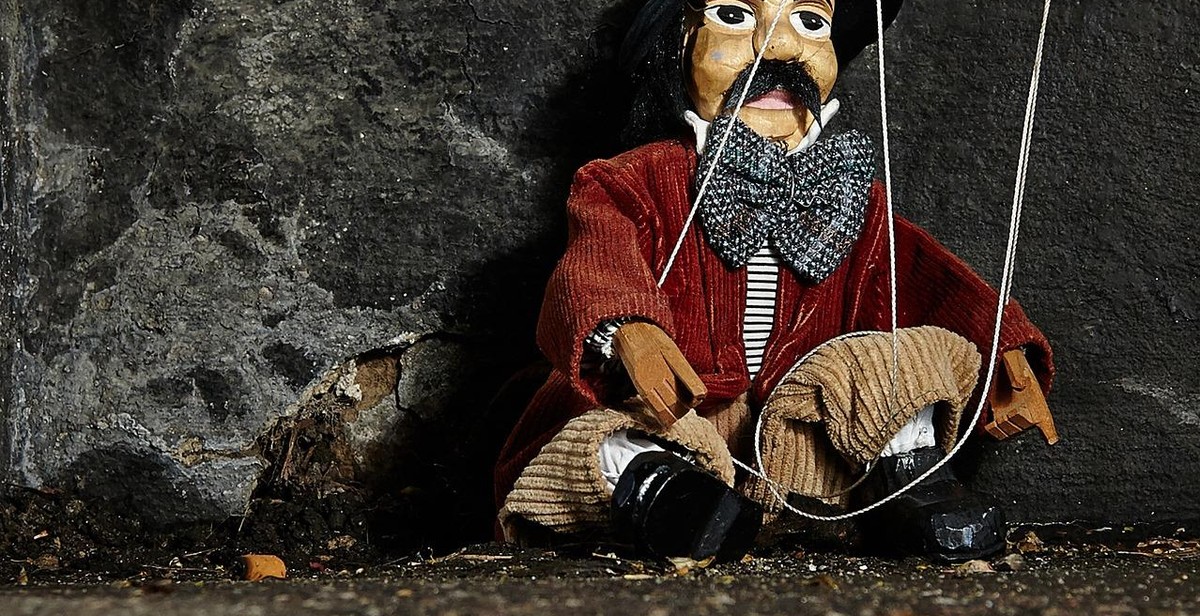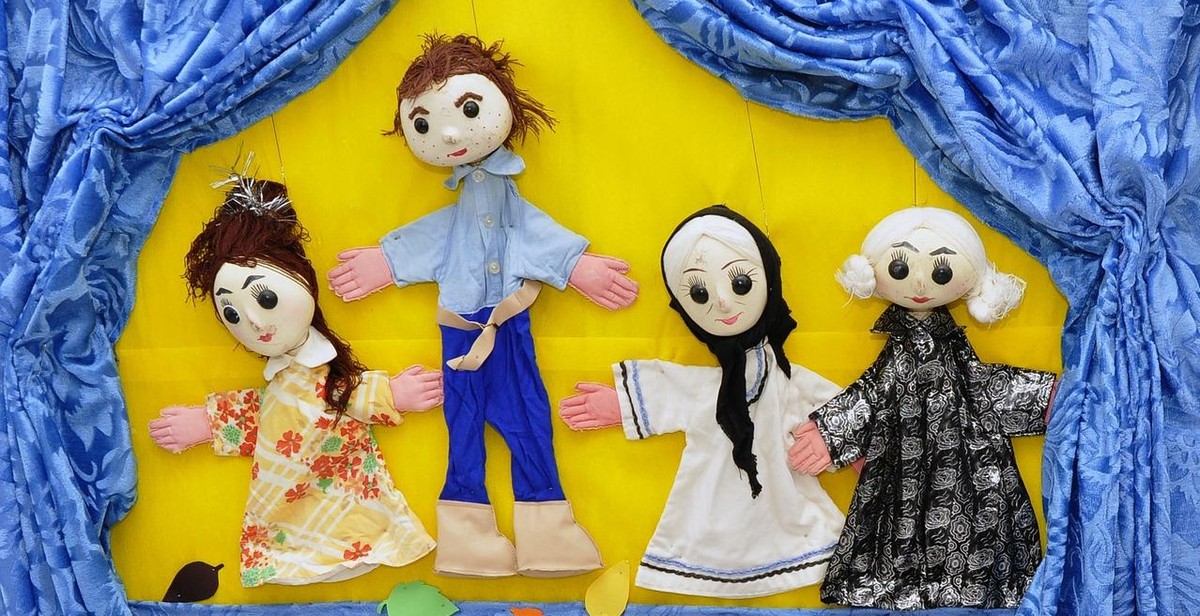How to Perform Marionette Facial Expressions: Techniques for Conveying Emotions through Puppet Faces
As a professional puppeteer with over 15 years of experience, I have learned that the key to bringing a marionette to life is in the facial expressions. The ability to convey emotions through a puppet’s face is what sets apart a good performance from a great one. In this article, I will be sharing some of my techniques for performing marionette facial expressions that will help you bring your puppet to life and captivate your audience.
The Importance of Facial Expressions in Marionette Performance
Facial expressions are an essential part of any puppet performance, but they are especially important in marionette performances. Unlike hand puppets, marionettes have limited movement in their bodies, so the face becomes the primary tool for conveying emotions and telling the story. A skilled puppeteer can make even the simplest marionette come alive through subtle facial expressions that communicate a wide range of emotions.
Techniques for Performing Marionette Facial Expressions
There are several techniques for performing marionette facial expressions that every puppeteer should master. These include:
- Using the eyes to convey emotion
- Manipulating the mouth and jaw for speech and expression
- Controlling the eyebrows and forehead for subtle expressions
- Using the head to show direction and focus
By mastering these techniques, you can create a truly captivating marionette performance that will leave your audience spellbound.

What Are Marionette Facial Expressions?
Marionette facial expressions are the movements and positions of the facial features of a marionette puppet used to convey emotions and expressions. Marionette puppets are string-operated puppets that have been around for centuries and are believed to have originated from ancient Greece and Rome. These puppets were used in various forms of entertainment, including plays, operas, and puppet shows.
Definition and History of Marionette Puppets
Marionette puppets are unique from other types of puppets because they are controlled by strings that are attached to different parts of the puppet’s body, including the head, arms, and legs. The puppeteer uses these strings to manipulate the puppet’s movements and expressions, giving the puppet a lifelike appearance.
The history of marionette puppets can be traced back to ancient Greece and Rome, where they were used in religious ceremonies and theatrical performances. In the Middle Ages, marionette puppets were popular in Europe, where they were used in traveling shows and street performances. In the Renaissance period, marionette puppets became more sophisticated, and they were used in operas and plays.
Today, marionette puppets are still used in various forms of entertainment, including puppet shows, theater productions, and movies. They are also used in therapy and education to teach children about emotions and social skills.
In conclusion, marionette facial expressions are a crucial aspect of puppetry, allowing the puppet to convey emotions and connect with the audience. With the right techniques and practice, puppeteers can create lifelike and expressive marionette puppets that captivate and entertain audiences of all ages.
Why Are Marionette Facial Expressions Important?
Marionette facial expressions are an essential aspect of puppetry as they help in conveying emotions and creating an emotional connection with the audience. The face of a marionette puppet is the most expressive part of its body, and it is through the facial expressions that the puppeteer can communicate the puppet’s feelings and thoughts.
When the marionette puppet’s facial expressions are well-executed, the audience can easily relate to the character’s emotions, and this creates a strong emotional connection. For instance, a sad expression on the puppet’s face can evoke feelings of sadness and empathy from the audience, while a happy expression can create a joyful and cheerful atmosphere.
Marionette facial expressions are also important because they help in storytelling. A puppeteer can use different facial expressions to convey different moods and emotions, making the story more engaging and captivating. Facial expressions can also help in character development by revealing the puppet’s personality traits and motivations.
Furthermore, marionette facial expressions are important because they add depth and realism to the puppet’s movements. When the facial expressions are in sync with the puppet’s movements, the puppet appears more lifelike and believable, making the performance more enjoyable for the audience.
Conclusion
In conclusion, marionette facial expressions are crucial in puppetry as they help in creating an emotional connection with the audience, storytelling, character development, and adding depth and realism to the puppet’s movements. As a puppeteer, mastering the art of marionette facial expressions is essential in creating a captivating and memorable performance.
Techniques for Performing Marionette Facial Expressions
Marionette facial expressions are a crucial part of puppetry. They bring the puppet to life and convey emotions to the audience. To master the art of marionette facial expressions, you need to learn techniques that involve the use of strings and poles, facial features manipulation, and body language and gestures.
Use of Strings and Poles
The strings and poles are the primary tools for controlling and manipulating the marionette’s facial expressions. The puppeteer attaches strings to specific parts of the puppet’s face, such as the eyebrows, eyelids, and mouth. These strings are then pulled or released to create different facial expressions. The poles are used to control the movements of the puppet’s head and neck.
Facial Features Manipulation
The puppeteer must be skilled in manipulating the marionette’s facial features to convey emotions effectively. For instance, raising the eyebrows can signify surprise or fear, while lowering them can indicate anger or sadness. Moving the mouth can show happiness or sadness, while opening it wide can signify shock or excitement.
Body Language and Gestures
Body language and gestures are also crucial in conveying emotions through marionette facial expressions. The puppeteer must coordinate the movements of the puppet’s body and face to create a believable performance. For instance, tilting the head to the side can indicate confusion or curiosity, while slumping the shoulders can signify sadness or defeat.
| Facial Expression | Description |
|---|---|
| Smile | Upward curve of the mouth, indicating happiness or pleasure |
| Frown | Downward curve of the mouth, indicating sadness or disapproval |
| Wink | Closing one eye briefly, indicating a secret or flirtation |
Mastering the art of marionette facial expressions takes time and practice. With the right techniques and dedication, you can create compelling performances that will captivate your audience.

Tips for Conveying Emotions through Marionette Facial Expressions
Marionettes are a unique form of puppetry that requires the puppeteer to master the art of conveying emotions through facial expressions. Here are some tips to help you improve your marionette facial expression skills:
1. Practice and Rehearsal
Practice and rehearsal are essential to improving your marionette facial expression skills. Take the time to practice different expressions with your marionette until you feel comfortable with them. Rehearse your performance to ensure that your facial expressions match the emotions you are trying to convey.
2. Study Human Facial Expressions
Study human facial expressions to gain a better understanding of how emotions are conveyed through facial expressions. Observe people in different situations and take note of the subtle changes in their facial expressions. Use this knowledge to bring your marionette to life and make its facial expressions more convincing.
3. Pay Attention to Detail
Paying attention to detail is crucial when it comes to marionette facial expressions. Every movement of the marionette’s face should be deliberate and precise. Make sure that each movement of the eyebrows, eyes, mouth, and cheeks is accurate and matches the emotion you are trying to convey.
- Take note of the position of the eyebrows. Raised eyebrows indicate surprise or shock, while lowered eyebrows indicate anger or sadness.
- Pay attention to the position of the eyes. Wide open eyes indicate surprise or fear, while squinted eyes indicate suspicion or anger.
- Use the mouth to convey different emotions. A smile indicates happiness, while a frown indicates sadness or anger.
By following these tips, you can improve your marionette facial expression skills and create more convincing performances. Remember to practice, study human facial expressions, and pay attention to detail to bring your marionette to life.
Common Mistakes in Performing Marionette Facial Expressions
Performing marionette facial expressions is an art that requires precision, practice, and patience. Although it may seem easy, there are common mistakes that puppeteers make that can hinder the effectiveness of the performance. Here are some of the most common mistakes:
1. Over-exaggeration
One of the most common mistakes in performing marionette facial expressions is over-exaggeration. While it may be tempting to make the puppet’s facial expressions larger than life, it can quickly become distracting and take away from the performance. Over-exaggeration can also make the puppet appear cartoonish and less realistic, which can be a turn-off for audiences.
2. Inconsistency in Expression
Another mistake that puppeteers make is inconsistency in expression. It is important to remember that the puppet’s facial expressions should match the emotions that the character is feeling. If the puppet’s facial expressions are not consistent with the emotions that the character is feeling, it can be confusing for the audience and take away from the performance.
3. Lack of Connection with the Puppet
Finally, many puppeteers make the mistake of not connecting with the puppet. It is important to remember that the puppet is an extension of the puppeteer, and the puppeteer should be able to convey the emotions and feelings of the character through the puppet’s facial expressions. Without a connection between the puppeteer and the puppet, the performance can appear stiff and lifeless.
By avoiding these common mistakes, puppeteers can create more effective and engaging performances that truly convey the emotions and feelings of the character.
Conclusion
Performing marionette facial expressions can be a challenging task, but with the right techniques, it can be a rewarding experience. By mastering the basic movements and understanding the different emotions that can be conveyed through puppet faces, you can create engaging and captivating performances that will leave your audience wanting more.
One of the most important things to keep in mind is to practice consistently and to be patient with yourself. It takes time to develop the necessary skills and muscle memory to perform convincing marionette facial expressions.
Key Takeaways
- Mastering basic movements is crucial for performing convincing marionette facial expressions.
- Understanding the different emotions that can be conveyed through puppet faces is essential.
- Consistent practice and patience are key to developing the necessary skills.
Final Thoughts
As a professional puppeteer and performer, I have had the pleasure of creating countless characters and bringing them to life through marionette facial expressions. It is a truly unique and rewarding art form that requires dedication, creativity, and a deep understanding of human emotions.
By following the techniques outlined in this article and continuously honing your craft, you too can create captivating performances that will leave a lasting impact on your audience.
